We Beat Em Before Well Beat Em Again Communist
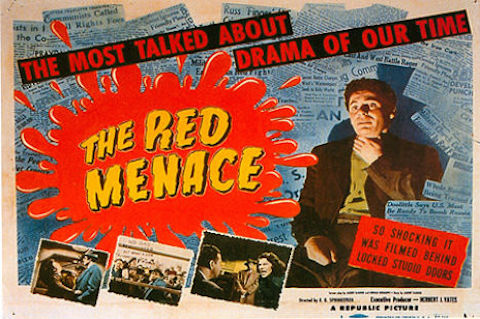
By its very nature, propaganda distorts the truth or tells outright lies. It targets our basest impulses—fearfulness and anger, flying or fight. While works of pure propaganda may pretend to make logical arguments, they eliminate nuance and oversimplify complicated issues to the point of caricature. These general tendencies concord true in every instance, simply nowhere, perhaps, is this gross exaggeration and fear mongering more than axiomatic than in times of war.

And while we've all seen our share of wartime propaganda, nosotros may be less familiar with the decades-long propaganda war the U.S. and Western Europe waged against socialism and Communism, fifty-fifty decades earlier the Common cold War era. It may surprise you to acquire that this offensive began even before the start of Globe War One, equally you lot can see higher up in a British Conservative Party poster from 1909.
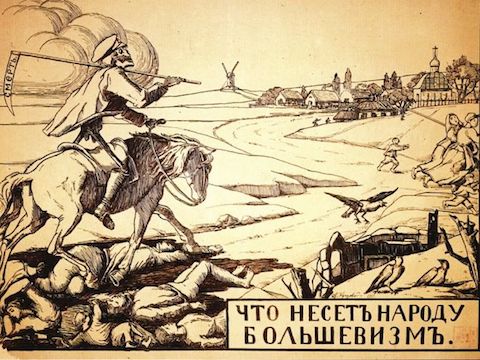
Representing socialism every bit an ape-like demon strangling some sort of goddess of "prosperity," this striking piece of poster art sets the tone for near all of the anti-Communist propaganda to come in the wake of the Russian Revolution. At least since this early graphic salvo, Communists and socialists have mostly been depicted as terrifying monsters. See, for instance, an early, postal service-WWI example of Russian anti-Communist propaganda higher up, portraying the Communist threat as an apocalyptic horseman of expiry.
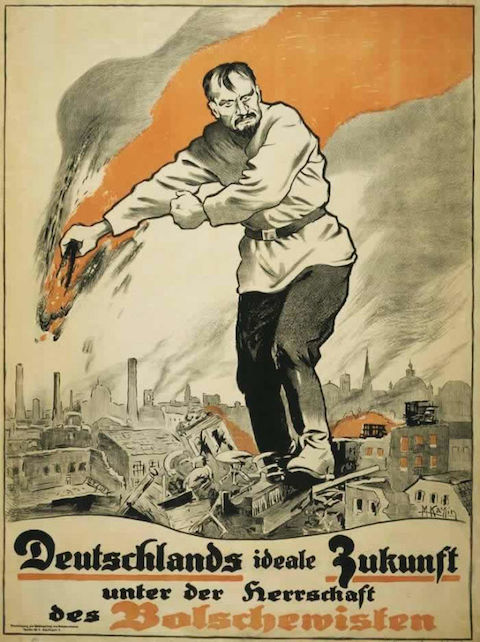
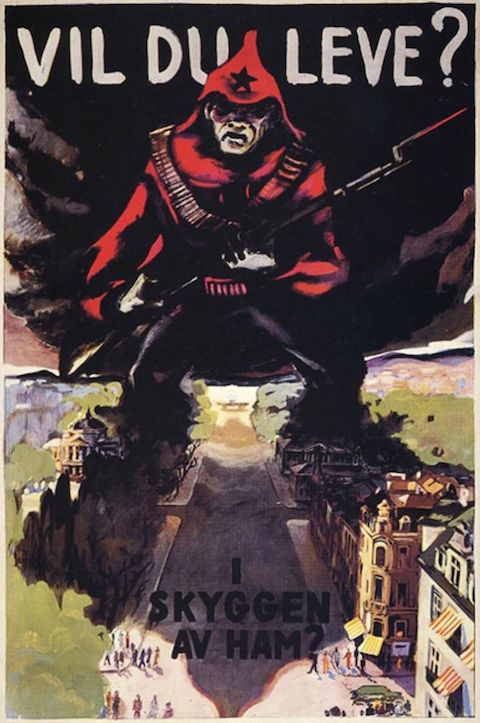
As the perceived threat increased, so besides did the scale of the monstrous caricatures. In the mail-WWI era German and Norwegian posters in a higher place, Godzilla-sized Communists lay waste material to entire cities. Below, in "Bolshevism Unmasked," an example from the 2nd World War, the skeletal Communist destroyer straddles the entire earth.
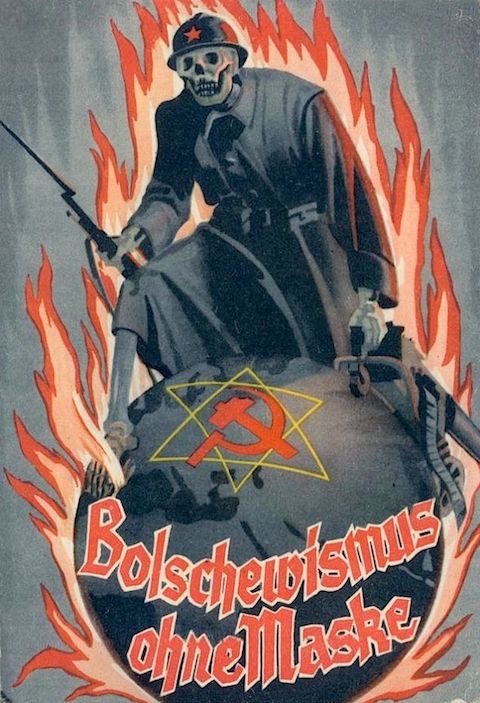
Occasionally the racial dimensions of these depictions were explicit. More than often, they were strongly implied. But a 1953 Cold War example beneath is particularly unsubtle. Showing a scene literally right out of a schlocky Paramount horror movie, featuring extra Janet Logan, the text tells us, "In case the Communists should conquer, our women would be helpless beneath the boots of the Asiatic Russians." At the top of this rather pulp slice of agit-prop, we're besides told that "many American men would be sterilized" should Russia win the "side by side world war."
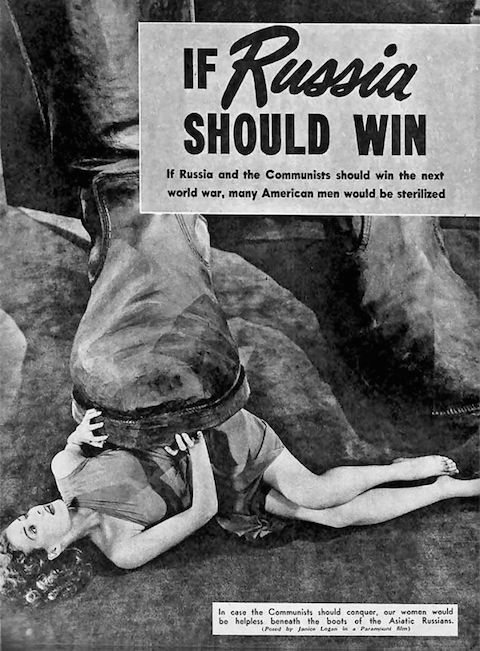
In the 50s and 60s, pop civilization media like film and comic books lent themselves particularly well to anti-Communist propaganda, and they were exploited relentlessly by government agencies, production companies, and corporations. Films like I Married a Communist (beneath) and The Scarlet Menace (peak), both from 1949, offered sensationalized pulpy takes on the red scare.
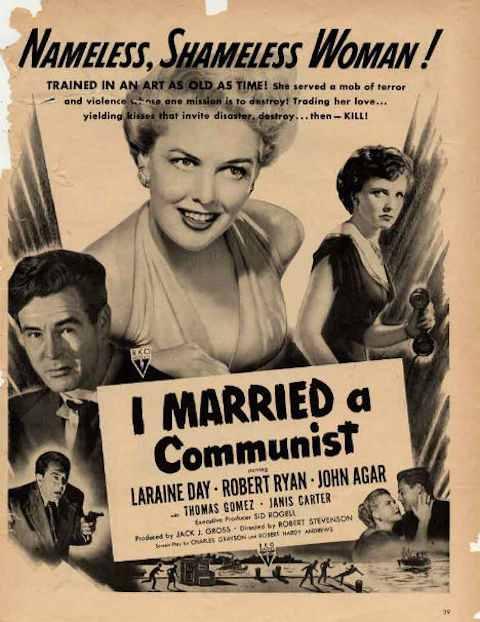
In these top Cold State of war decades, anti-Communist sentiment flourished as the U.S.'s former ally the Soviet Union became its primary enemy. Comic books provided the perfect platform for the broad strokes of anti-Communist propaganda. Every bit psychiatrist Fredric Wertham waged war confronting the corrupting influence of comic books, advertisers and the regime found them increasingly constructive at spreading messages. "If there was any entity that believed in the power of comic books to indoctrinate and instruct as Wertham did," writes Greg Beato at Reason, "it was the U.S. government."
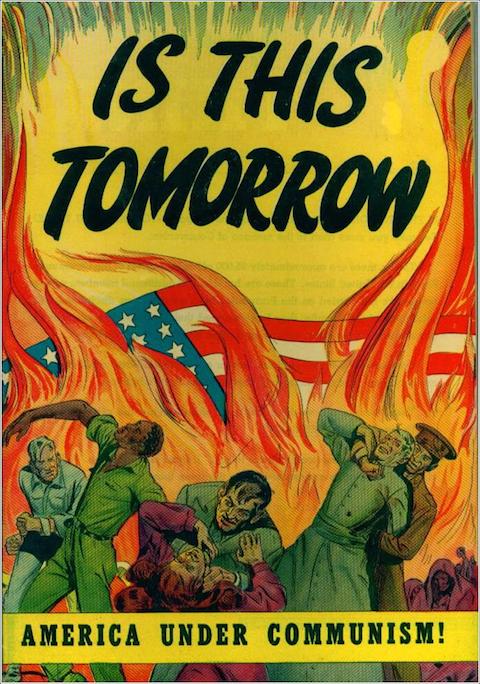
But private entities did their share in the comic volume war confronting Communism as well. Witness a peculiarly wild example, Is This Tomorrow?, above. Published by the "Catechetical Guild Educational Society" in St. Paul, MN, this 1947 comic implicates government regulation of business, social welfare programs, anti-religious sentiment, and "people giving upwardly their empty-headed ideas about 'sacredness' of life" in a fiendishly orchestrated plot to take over America. Workers who embrace Communist doctrine are little more than dupes and pawns. Yous tin read the whole feverish scenario here.
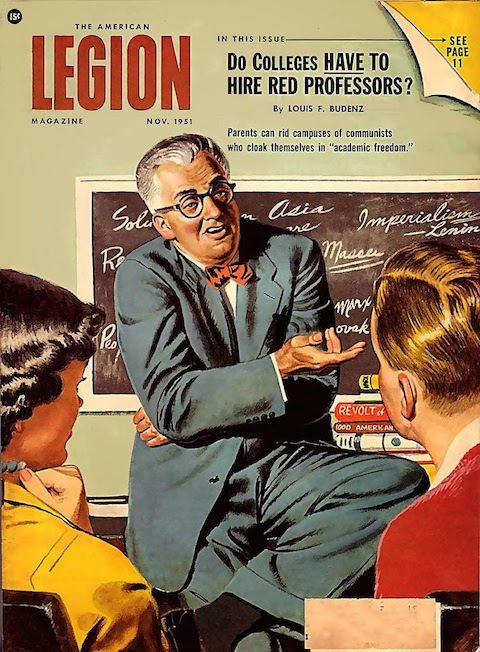
These cartoon scare tactics may seem outlandish, only of course nosotros know that red scare propaganda had existent effects on the lives and livelihoods of real Americans, particularly those in the arts and academia. Freethinking, left-leaning artistic types and intellectuals have long been targets of anti-Communist paranoia. The American Legion Mag embrace in a higher place illustrates the fearfulness—one nevertheless very prevalent now—that higher professors were bent on corrupting immature, malleable minds. "Parents," the magazine states, "can rid campuses of communists who cloak themselves in 'academic liberty.'" At the height of the scarlet scare, many college professors, like Stanley Moore at Reed College, were dragged before the House Un-American Activities Committee and summarily fired.
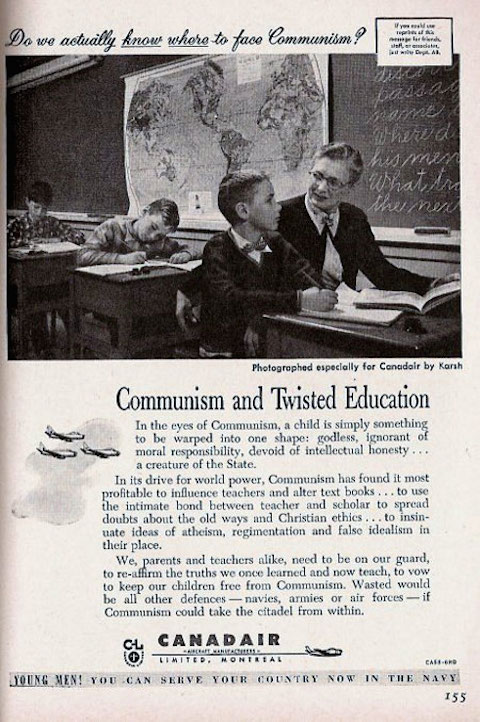
More confident, information technology seems, than the propaganda of previous decades, the Cold War diverseness shrunk the Communist threat back to human dimensions. Just Communists were no less monstrous than earlier—only more insidious. They looked like your neighbors, your co-workers, and your children's teacher. Instead of purveyors of animate being force, they were depicted as devious manipulators who used ideological machinations to pervert commonwealth and cripple capitalism. Equally in the American Legion college professor cover story, education was oftentimes posed equally the cultural battleground on which—as the heated Canadair ad above states—"Communism could accept the citadel from inside" past spreading "doubts about the old ways" and insinuating "ideas of atheism, regimentation and false idealism."
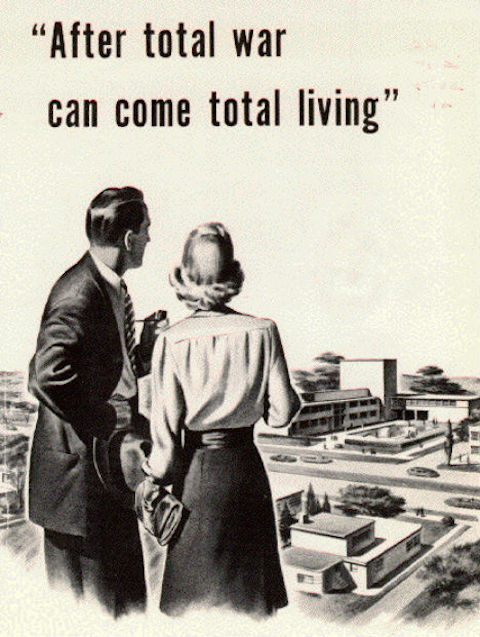
Post-WWII, of course, the greatest threat was non a full-scale invasion—it was total nuclear anything. It was a grim possibility—as Kubrick'southward Dr. Strangelove satirically pointed out—in which no one would win. Web Urbanist points united states toward one particularly chilling and dishonest piece of propaganda distributed by the government. In the poster in a higher place, we are assured that "After full state of war tin can come total living." Unless the happy couple is gazing out over a manicured suburb in the afterlife, this scene of "full living" post-nuclear war is absurd given the strategy of Mutually Assured Destruction. Nevertheless, what the poster depicts is an analogue of the Soviets' totalitarian ethos—it's a futurity of full ideological purity, in which the Earth has been cleansed of the hulking monstrous hordes of Communism, as well as, presumably, the crypto-Communist teachers, artists, intellectuals, and bureaucrats who threaten from within.
via Web Urbanist/io9/Kuriositas
Related Content:
How to Spot a Communist Using Literary Criticism: A 1955 Manual from the U.Due south. War machine
Soviet Artists Envision a Communist Utopia in Outer Space
The Curious Story of How Bootlegged Hollywood Movies Helped Defeat Communism in Romania
Josh Jones is a writer and musician based in Durham, NC. Follow him at @jdmagness
tolberttwoult1944.blogspot.com
Source: https://www.openculture.com/2014/11/the-red-menace-a-striking-gallery-of-anti-communist-propaganda.html
0 Response to "We Beat Em Before Well Beat Em Again Communist"
Post a Comment